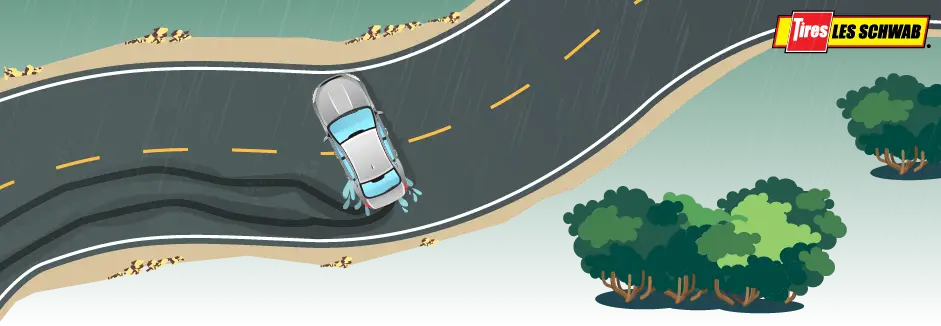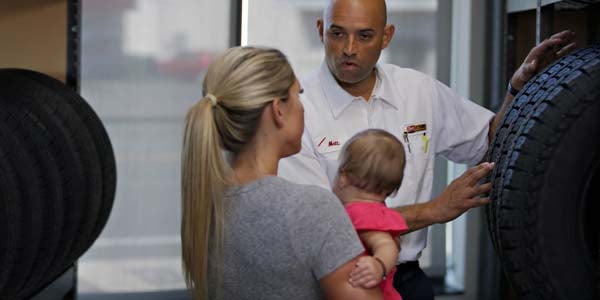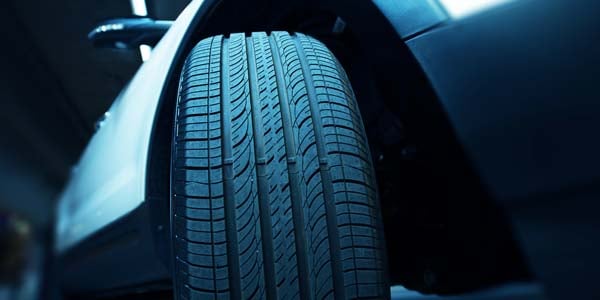Replacing Just Two Tires? Install Them on the Back
What, where, and how you drive can impact the life of your tires. Even with proper rotations, two of your tires, the ones on the front, will wear down faster. When this happens, it might make financial sense to buy two tires instead of all four. If you do, it’s important to have the two new tires installed on the back axle, even on front-wheel-drive vehicles, to ensure better handling and safety. Let’s take a look at why this is important and what else you need to know about replacing your tires.
Why New Tires Should Go on the Back
Ideally, replacing all four tires at once provides the best grip and stability, especially for all-wheel-drive (AWD) vehicles where uneven tread depth can cause damage.
When buying four new tires isn’t an option or it’s unnecessary, putting the new tires on the rear axle can help maintain stability during sudden maneuvers and in wet or slippery conditions to prevent oversteering and loss of control. This can be especially important for braking in emergencies.
Handling Wet, Icy, and Snow-Covered Roads
Yes, installing four new tires is often ideal. But, when getting just two tires, putting them on the rear axle can help maximize your traction and stability, reducing the risk of accidents. This is crucial for maintaining control on wet, icy, and snow-covered roads, as well as on surfaces with less traction, such as dirt and gravel.

The Problem With Installing Two New Tires on the Front Instead of the Rear
OVERSTEER
Installing new tires on the front can cause your vehicle to oversteer anytime the rear tires (the ones with less tread) lose traction, including hydroplaning. This may cause the back end of your vehicle to swing, creating a potentially hazardous situation that is difficult to control. Installing new tires on the rear axle is the better choice.
A Word on Hydroplaning
The first 10 minutes of a light rain are some of the most dangerous moments for hydroplaning. This happens when the tread on your tires cannot channel the water away fast enough and loses contact with the road, causing a loss of control. There are other factors, such as speed, vehicle weight, and tire pressure. But overall, it comes down to tread depth and the amount of water encountered. Check out our article on how to drive in the rain and avoid losing control for more information.
Importance of Matching Tire Specifications
When replacing only two tires, it’s important that those tires match the existing ones in terms of size, type, and tread pattern. This isn’t possible with staggered fitment situations where the front and rear tires are not the same size. In most situations, mismatched tires can cause uneven wear, poor handling, and safety risks. Always refer to your vehicle’s manual or consult with a tire professional to ensure compatibility.
AWD and 4WD Considerations
For all-wheel-drive (AWD) and four-wheel-drive (4WD) vehicles, maintaining consistent tread depth across all tires is vital for alignment and to prevent damage to parts of your vehicle. If replacing only two tires, make sure the new ones closely match the remaining tread wear. Also, pay close attention to tire size, type, and tread pattern. The professionals at Les Schwab can show you all of your options and help you make an informed decision.
Budget-Friendly Tire Replacement Options
Sometimes replacing all four wheels at once just isn't in the family budget. We get it. In those cases, consider purchasing high-quality used tires that match your existing tires. However, used tires don’t come with a warranty.
You can also choose a payment plan to purchase new tires. This allows you to spread the cost over time. Les Schwab offers various financing options to help you get the tires you need without breaking the bank. Plus, those new tires come with the Les Schwab Tire Warranty, including our no-hassle road hazard protection, 60-day satisfaction guarantee, and free tire maintenance.
Seasonal Considerations for Tire Replacement
Depending on the season, the type of tires you are replacing may vary. For instance, if you’re replacing two winter tires, you should consider replacing them with equal snow tires for better traction in snow and ice. Les Schwab can help you choose the best tire type for your seasonal driving needs.
We’re Your Tire Experts
When possible, we recommend replacing all four tires at once for better grip, performance, tire life, and safety. If you have questions about installing just two new tires on your vehicle, or just want a pre-trip safety check before your next big family adventure, stop by your local Les Schwab.
What you need to know

What are Directional Tires?
Directional tires have a specialized tread design. To be sure you don’t put them on the wrong way, and you’re rotating them properly, here’s an explainer.

What Does a Set of New Tires Cost?
The cost of replacement tires depends heavily on what type of vehicle you drive. But a number of factors can affect the total price.

Should You Replace All Four Tires on Your AWD Vehicle?
When replacing the tires on an AWD (all-wheel drive) vehicle, it may be necessary to replace all four at the same time. Learn why.

